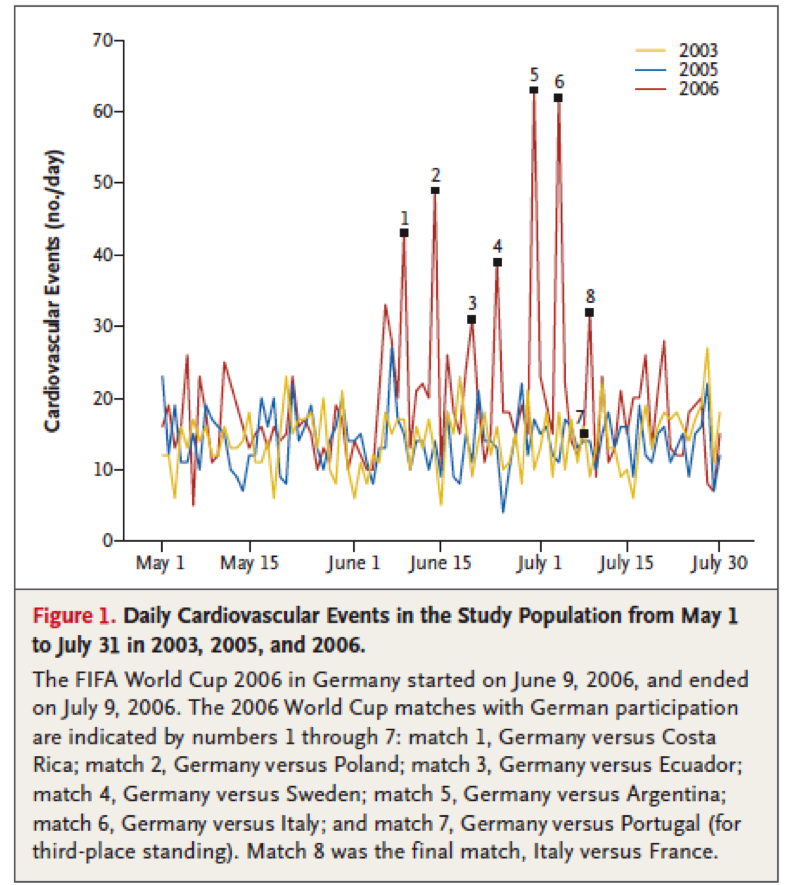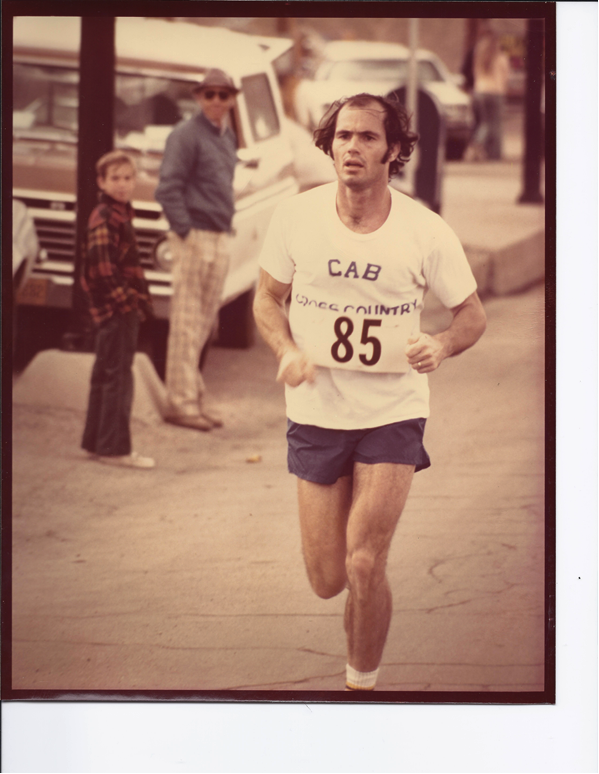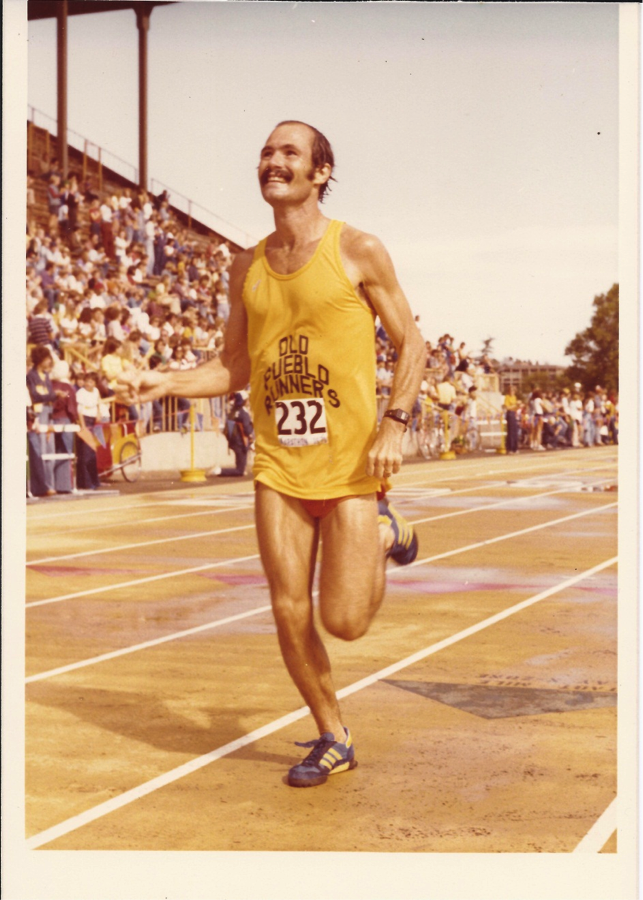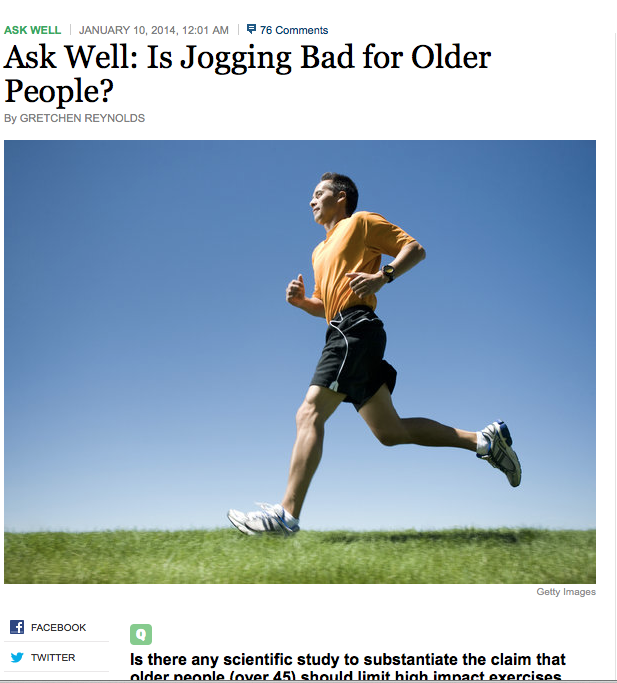Archive for January, 2014
Is The Super Bowl Dangerous?
Super Bowl Sunday is about to land on us again. I will leave to others to analyze the football, advertising, TV viewership and economic impact statistics associated with the game. I want to cover the potential health related effects of the big game – on fans – not the players. So here is a list of some of the main risk of mass spectator sporting events.
1. Heart Attacks
The risk of heart attack during and after the game goes up especially in people (middle aged and older men) who have multiple risk factors and are passionate fans of team that loses. There is also some interesting data from Germany showing a 2-3 fold increase in emergency room admissions for cardiovascular events when Germany was playing. This study concluded that:
“Viewing a stressful soccer match more than doubles the risk of an acute cardiovascular event. In view of this excess risk, particularly in men with known coronary heart disease, preventive measures are urgently needed.”
Here is a chart from that study, the 2006 data is from the World Cup year, the 2003 and 2005 is data from years with no World Cup:
My advice for passionate fans who know they have heart issues to make sure they take their medicine the day of the game. These folks also need to remember that no matter who wins or loses, the sun will come up in the morning and the key is to make sure they do too.
2. Terrorism & Stampedes
The idea that the Super Bowl or some other major sporting event might be the target for a terrorist attack is nothing new. However, as I searched for information on this topic the issues of fan stampedes at major public events popped up. This is a particular problem in the developing world but events have occurred all over and one of the most notorious is the Hillsborough disaster in the UK. It appears that the risk of stampedes can be reduced considerably via a combination of effective crowd control and better stadium design. The authorities responsible for Super Bowl XLVIII should be able to prepare for either of these possibilities and hopefully they will have a bit of luck too.
3. Riots & Hormones?
Riots in one of the participating cities (Seattle or Denver) are a possibility. What is interesting is that rioting in the city of the winning team is not unusual. There are all sorts of theories about what triggers these riots, but one idea is that there is a hormonal surge especially in the young men who are passionate fans via the sociology of “basking in reflected glory”.
“Basking in reflected glory, in which individuals increase their self-esteem by identifying with successful others, is usually regarded as a cognitive process that can affect behavior. It may also involve physiological processes, including changes in the production of endocrine hormones. The present research involved two studies of changes in testosterone levels among fans watching their favorite sports teams win or lose. In the first study, participants were eight male fans attending a basketball game between traditional college rivals. In the second study, participants were 21 male fans watching a televised World Cup soccer match between traditional international rivals. Participants provided saliva samples for testosterone assay before and after the contest. In both studies, mean testosterone level increased in the fans of winning teams and decreased in the fans of losing teams. These findings suggest that watching one’s heroes win or lose has physiological consequences that extend beyond changes in mood and self-esteem.”
These surges might then drive violent or territorial behavior after the game and some people think that the mere presence of the police trying to keep a victory celebration in line might actually contribute to the problem. These sorts of data drive all sorts of speculation about the evolutionary biology of behavior for other hormones like cortisol which can also rise in fans:
“The cortisol data from this study are in line with social self-preservation theory, as higher cortisol secretion among young and greater soccer fans suggests that especially they perceived that a negative outcome of the match would threaten their own social esteem.”
Win Drink & Be Violent?
There is also all sorts of evidence that excessive fan drinking can contribute to most of the problems outlined above and winning may amplify the urge to drink and perhaps feed into some of the effects of hormones on “bad” postgame behavior here is the summary from a study on Rugby fans:
“…..team success but not failure may increase aggression among supporters, and…..aggression, not celebration, drives post-match alcohol consumption. Losing and drawing decreased happiness but winning did not increase it. Better understanding of pathways to violence in these circumstances will pave the way for more effective prevention and management strategies.”
Beyond drinking there is also some evidence that illicit drug use in the host cities goes up as well.
What to Do?
The take home messages from the data above are pretty clear cut. If you have known cardiac issues make sure you take you meds and be aware that simply watching the game on TV is not risk free. If you are watching the game with folks who might have health issues and they develop chest pain, shortness of breath or an irregular heartbeat, call 911. If you are out in a crowd of revelers, pay attention to your surroundings and avoid situations where you could be trapped with no escape route. Finally, how much do you really need to drink? Have a few but not a few too many.
Hayden Smith Before & After
Here are a couple of vintage pictures of Hayden Smith who I mentioned earlier in the week. These shots give you some idea about how his body changed as he made the ten pound transition from a speed/strength/power “fast-twitch” athlete in the middle 1970s to a 2:26 marathoner by the late 1970s. His comments about the pictures are instructive.
Tucson Marathon 1975
“After the race I coached at the regional wrestling tournament for 8 hours. Now I need a nap after a 5 miler.”
Eugene Marathon 1979
“Little did I know Stoney (Dennis Stonehocker) had just missed qualifying (for the Olympic Trials) that day. Blair (Johnson) was 2:16 or 2:17, Tom (Rotkis) was 2:23. I spent the final 100 looking at the clock ticking in the 2:20’s. Finally under 2:30:00! I didn’t bother to kick (like the day we raced to the finish in the parking lot in Tucson).”
Denis Stonehocker and Tom Rotkis were part of our group of “sub-elite” marathoners in Tucson from that era.
10,000 hours: The Saga of Hayden Smith
I want to do a final post on the idea that 10,000 hours of deliberate practice can make anyone world class at anything. This follows the recent posts on the general topic of talent and some of the nuances or even urban legends about the so-called 10,000 hour rule. To do this I want to tell you the story of Hayden Smith who is the cross country coach at Albion College.
Hayden Smith 1.0
The first version of Hayden happened in the late 1960s when he competed for Albion. He was a 5’8”, 145 pound sprinter/jumper who could run the 100 yard dash in 10.2, long jump 23 feet and high jump 6’5”. In an e-mail he told me his best time for the 220 yard dash was:
“23.1……always faded because it was too far!”
Hayden graduated from Albion in 1970.
Hayden Smith 2.0
The second version of Hayden emerged in the early 1970s when he began to teach and coach at Flowing Wells High School in Tucson, Arizona. For some reason he decided to start running long distances. In 1974 Hayden ran his first marathon. Here is the progression of his personal bests along with some notes about his body weight over that time.
Date PR Weight (lbs) Site
12-01-74 3:14:30 142 Culver City
02-15-75 3:01:54 142 Tucson
06-14-75 2:56:13 140 Palos Verdes
12-20-75 2:49:43 138 Fiesta Bowl
06-20-76 2:47:05 138 Toledo
12-11-76 2:40:26 138 Fiesta Bowl
12-10-77 2:38:20 136 Fiesta Bowl
02-18-78 2:32:30 135 Tucson
12-02-78 2:31:44 135 Fiesta Bowl
04-16-79 2:30:37 135 Boston
09-09-79 2:26:28 133 Eugene
12-01-79 2:26:10 134 Fiesta Bowl
While Hayden was getting better and better over the years he was part of an informal group of about 10 people in Tucson who all had personal bests for the marathon under 2:30. The group lasted until the early 1980s when people either started running less, moved away or got into other sports. From time to time true elites with times near 2:10 like Ed Mendoza, Thom Hunt and Don Janicki would train with us. More frequently Blair Johnson and Nick Martin, who both had personal bests of around 2:15, ran with us.
Most members of the group had a history in endurance sports and broke 3 hours the first time they ran a marathon, frequently off minimal training. They then got better quickly and in a year or two were running near 2:30 or faster. By contrast Hayden showed a slower start and a five year progression to a sub 2:30 time. During those years he was averaging between 80-100 miles per week of running or more, doing hard core interval training, and long runs in the mountain trails around Tucson on Sundays. In other words Hayden was training the way elite runners were at the time and still do! He was also regularly running shorter road races. Hayden continued to train at this level through most of the 1980s and ultimately he broke 3 hours 55 times. However, his personal best is from 1979.
If there is anyone in the world who has spent 10,000 hours of deliberate practice at anything it is Hayden Smith.
Hayden vs. 10,000 hours?
Hayden is a great example of both the power and limitations of the 10,000 hour concept. First, he became a truly accomplished distance runner in spite of the fact that he started out in what might be called “fast twitch” sports where he was also way above average but not great. So, Hayden got good at distance running even though it was probably not exactly where his “natural talent” lied. Second, no matter how much he trained his upper limit was still a long way away from world class. That was true for all of the other members in the group as well. Everyone found a talent barrier somewhere in the 2:20 to 2:30 range no matter how hard any of us trained.
So, when anyone tells you that talent doesn’t matter don’t believe them. And, when anyone tells you the practice doesn’t matter don’t believe them.
Talent & Achievement: Beyond 10,000 Hours!
In my last post I summarized an ongoing e-mail exchange I was having with David Epstein, Terry Laughlin and Amby Burfoot. The focus of our exchange was on talent in general and the idea the champions are either born and then made or simply made via intense and deliberate practice. When this topic comes up the first thing that pops into many people’s mind is the “10,000” hour rule as popularized by Malcolm Gladwell. The basic idea is that practice beats talent and that with enough of it “anyone can become world class”.
The conversation is continuing and David got Jonathan Wai involved. Jonathan is one of the world’s leading experts on the nuances of intellectual and creative talent, and it has been fun to get his perspectives. It is also interesting to see how ideas about talent, practice and achievement in academic and creative fields are the same or different than for sports. So what have I learned in the last 10 days as the exchange continues?
Dr. Ericsson I Presume?
At least some of the ideas associated with what Terry Laughlin described in our exchange as the “10,000 brand” come from K. Anders Ericsson, a psychologist at Florida State University. Ericsson is now either back tracking from some of his original ideas or perhaps they were misinterpreted and oversimplified to begin with. Here are a few caveats to think about:
- Many of the groups used to make the 10,000 hour argument are elite or nearly elite to begin with. So perhaps among the most talented people, more practice makes a difference.
- The distribution of practice times to “elitehood” is highly variable and reflects potentially complex interactions between talent, exposure, and what might be called trainability. Average values rarely tell the whole story.
- There are obvious talents like body size, which trump all sorts of things. You will never find small shot putters or big gymnasts.
- For academic and creative efforts there are many parallels with sport. That having been said kids who do really, really, really well on early tests of academic ability end up (on average) with higher levels of academic and professional achievement later in life in comparison to the merely seriously above average. Practice and motivation matter but so does talent.
Rage to Master!
One of the more interesting topics that came up is the so-called “rage to master” concept. The idea is that a very few people are both gifted in a given domain and also develop an early interest in pursuing it like their “hair is on fire”. There are some great examples from the visual art world that include people who draw well early. There are also well known examples like Picasso. The image below is the “First Communion” that Picasso painted when he was about 15. I am not an art historian, but it is pretty clear that he had mastered what might be called classic 19th century European painting at an early age before moving on to his later innovations.
The other interesting thing about highly precocious highly motivated kids is that they seem to “pull” their environment as opposed to being pushed by parents; again their hair is on fire. David Epstein sees Tiger Woods as a classic example of pull that went along with any physical talent he had plus the early exposure. It is also easy to see how under the right circumstances all of these factors can amplify each other with success leading to more motivation, more practice, and then more success……..
Go For Broke!
Tiger Woods (at least the Tiger of old) also conjures up what might be described as the “go for broke” mindset. Amby Burfoot wonders if that is part of the success of the E. Africans in distance running. They go out hard and push the pace. Many crash and burn in big races, but if someone is really on that day, and conditions are right then the odds of a breakthrough time improve. As I thought more about this it occurred to me that one of the reasons Tiger Woods is not as dominant as he once was is that the wave of golfers just behind him (the 20 somethings) saw him go for broke and now all do it. Thus, on any given day at least someone almost as good as Tiger gets hot and is there to challenge him.
Practice, Practice, Practice
Terry is a very effective advocate of deliberate practice and he has shown repeatedly that technique and skill matter in swimming, and that it is way more than getting in the pool and mindlessly working out. He sent a link about the 17 year old Ski phenomenon Mikaela Schiffrin. The story reinforces many of the ideas we have been e-mailing about:
- She obviously has some ability and is the perfect size. The picture in article shows what appear to be powerful legs and a low center of gravity.
- She got intensive early exposure but also developed well-rounded athletic skills like juggling while riding a unicycle.
- She seems to have the “rage to master” and by master I mean focusing on flawless and efficient technique.
Where to Leave It?
The conversation is continuing, but where to leave it for now? There are all sorts of pieces of advice that might flow for our discussion but one thing that is for sure is that we have at least some control over our effort and how well we practice. The story of Mikaela Schiffrin juggling and riding a unicycle along with the observations in last week’s post on “sample early and focus “ make me think that focusing on general motor and intellectual skills and that mastering a few fundamentals at any age has a lot of merit. That having been said, here is something about Vince Lombardi explaining his basic plays in 1965 to center Bill Curry. Curry was a rookie and Lombardi used nothing more than a yellow legal pad and a pencil:
“Our system is complete, simple, and comprehensive,” he went on. “We can attack the whole field. We have very little trickery. We really don’t need it. We win with execution. Something works, not because it’s a brilliant piece of strategic or tactical thinking, but because our team has practiced the same plays, the same movements, and the same fundamentals over and over and over again.”
How great a teacher was Vince Lombardi? The best way to answer that is to tell you that, 43 years later, I remember each one of the plays he outlined for me that day. I can draw each assignment, make the calls, and teach their installation. I remember the coaching points for the guards, tackles, and tight ends. I remember it all, as if it were yesterday. “
In sports the fundamentals include superior technique, foot work, balance, timing, and conditioning. Together they are tough to beat. They can make the gifted elite and permit the rest of us mere mortals to develop high levels of skill and immense personal satisfaction.
Talent, Talent, Who’s Got The Talent?
Have you ever gotten into a long three or four way e-mail conversation with friends and colleagues? Recently I had one that started out on the topic of “talent identification” in sports and headed off into several related directions over multiple days. In addition to me, the participants were David Epstein, the author of the “Sports Gene”, Terry Laughlin, the creator of Total Immersion Swimming, and the runner/author Amby Burfoot. Here is a synopsis of some of the things that came up in the exchange.
1.) The Kid From Fargo
The conversation started when I asked David, Terry and Amby what they thought about the following story. On the day after Christmas, my wife and I did a short swim workout at our local athletic club. The next lane was occupied by a young guy who was doing what might be described as a serious swim workout. During a break in his interval training, I asked what college he swam for thinking that perhaps he was a small college swimmer home for winter break. Instead I learned he was high school kid from Fargo, N.D. visiting relatives in Minnesota. We talked a bit more and he told me he could break 1:50 for a 200yd freestyle. He also did some running with a 2-mile best of around 9:50. His training regimen sounded serious but modest with no year round running for example. I also guessed that the mystery swimmer was about 5’10” (9180cm) and 150lbs. (68 kg)…….perfect size for the triathlon. We finished the conversation with me encouraging him to give the triathlon a try.
So, how good could the kid from Fargo get if he trained seriously for say an Olympic distance (1500m swim, 40km bike ride, and 10km run) triathlon? The fact that he was training alone while on vacation made me think he was pretty committed. His times while very good are not great; however, Fargo is not an endurance sports hotbed and who knows what opportunities he might have to really train and improve in college. My bet is that with training he could become at least a sub-elite regional class triathlete, and with a bit of luck perhaps national or even world class.
2.) Talent Identification
I have made the point before that in comparison to a country like Kenya there is plenty of wasted aerobic talent in the U.S. The other critical point is that talent identification works. A good recent example is the Great Britain Rowing Team Start Programme which seeks to find tall people with a lot of aerobic power and turn them into rowers. This effort has been successful and resulted in a number of Olympic medals and World Champions and there is also a focus on who is motivated to do the training required to excel:
“The right physical characteristics are of course not the only factor that is needed to achieve that ultimate prize of an Olympic gold medal. You also need commitment, the ability to train hard and the right mental attitude. Even with all the physical capabilities described above if you don’t make the full commitment to training and make sacrifices where necessary then even the most talented person will not make it.”
So, when you say lack of talent, my response is lack of talent identification.
3.) What About Motivation
In our e-mail exchange Terry pointed to an experience about motivation that he had early in his coaching career that I found fascinating:
“The most interesting observation I made while working with younger competitive swimmers–including a fair few elites who I developed–was that intrinsic motivation was a far more significant factor than physical talent. I first noticed this accidentally because my first coaching position was at the U.S. Merchant Marine Academy at Kings Point, 1972-75.
But the much more interesting observation was about motivation.
At Kings Point everyone was on scholarship, so no one swam for that reason. That left two reasons to swim (1) You wanted to, and (2) You did so to escape shit duty, as athletes were excused from reviews, washing latrines, swabbing floors, etc, during the season.. The prevalence of people who swam for intrinsic reasons in the faster lanes, and of escapers in the slower lanes, was even more striking than of body types. That observation remained true for the rest of my career in ‘serious’ coaching which continued through 1988. And it remains the most influential aspect of the coaching I’ve done since.”
4.) Early Specialization: Good or Bad?
One of the big ideas out there is that champions in sport and elites in many fields are made and not born via 10,000 hours of deliberate practice. This would tend to argue for early specialization. However, David pointed out that for “CGS” sports that are contested in centimeters, grams, or seconds there is evidence that later specialization is better:
“Based on a Danish sample of 148 elite and 95 near-elite athletes from cgs sports (sports measured in centimeters, grams, or seconds), the present study investigates group differences concerning accumulated practice hours during the early stages of the career, involvement in other sports, career development, as well as determining whether or not these variables predict membership in the elite group. The results clearly reveal that elite athletes specialized at a later age and trained less in childhood. However, elite athletes were shown to intensify their training regime during late adolescence more than their near-elite peers. The involvement in other sports neither differs between the groups nor predicts success. It can be concluded that factors related to the organization of practice during the mid-teens seem to be crucial for international success within cgs sports. Future research should adopt a longitudinal design with means of drawing causal inferences.”
Did the late specializers do better because they intensified their training during a key period of physiological growth and development? Did being a bit older allow the most motivated kids to pick the sport that interested them the most and then really commit to the required training for the internal vs. external reasons mentioned by Terry above?
There is a lot of talk about of how birthdays early in the year are key determinants of who does well in sports like Hockey via what is called the relative age effect. The idea is that kids who are relatively older do well and thus get more ice time and practice and thus get better and better leaving the younger kids in the dust. However, on further review this appears to be a superficial analysis:
“Because RAEs are well-established in hockey, we analyzed National Hockey League (NHL) drafts from 1980 to 2006. Compared to those born in the first quarter (i.e., January-March), those born in the third and fourth quarters were drafted more than 40 slots later than their productivity warranted, and they were roughly twice as likely to reach career benchmarks, such as 400 games played or 200 points scored. This selection bias in drafting did not decrease over time, apparently continues to occur, and reduces the playing opportunities of relatively younger players. This bias is remarkable because it is exhibited by professional decision makers evaluating adults in a context where RAEs have been widely publicized. Thus, selection bias based on relative age may be pervasive.”
There are other holes in the 10,000 hour argument that David has covered in his book. It is certainly an interesting idea that is easy to grasp, but like a lot of ideas that are easy to grasp sometimes the nuances get lost as things get oversimplified for public consumption.
5.) Limits of Deliberate Practice?
Amby wanted to know what happens to people that really devote themselves to something new later in life. The example of Dan McLaughlin comes to mind. Mr. McLaughlin essentially quit his day job as a commercial photographer to see just how good a golfer he could become with 10,000s of deliberate practice:
“On April 5th, 2010, Dan quit his day job as a commercial photographer and began The Dan Plan. Having never played 18 holes of golf in his life, Dan started the 10,000 hour journey with just a putter. After five months of putting, he received his second club, a pitching wedge. Just before the first anniversary of The Dan Plan, Dan took his first full-swing lesson. After 18 months he swung a driver for the first time. On December 28, 2011 he played his first full round with a full set of clubs. Since then it has been off to the races.
Logging in 30-plus hours a week he will hit the 10,000 hour milestone by December 2016. During this time, Dan plans to develop his skills through deliberate practice, eventually winning amateur events and obtaining his PGA Tour card through a successful appearance in the PGA Tour’s Qualifying School.”
From what I can tell, three years into his plan, Dan McLaughlin currently has a handicap of about 6 meaning he usually shoots about six over par. I am not an expert on handicap systems but from what I can tell top PGA pros are routinely a few shots under par on their home courses. At some level this little experiment shows us both the power and limits of deliberate practice. Dan McGlaughlin is becoming a solid golfer and now is in the 10% of people who actually take the time to post handicaps. To put it in perspective, about 15% of marathon finishers run under 3:30.
However, I would be remiss if I did not highlight that many positive aspects of deliberate practice including improved performance and learning how to spend more time in a relaxed Flow like state while doing challenging things. These effects can be hard to quantify but as Terry points out most of the time the key is train well vs. simply harder.
6.) The Talent Question
To become truly skilled at most things requires practice. Practice plus the nebulous concept of talent can lead to exceptional performances. David tells me that the Kenyan runners are convinced they are more talented. Is this real? Does their belief increase their motivation and lead the most talented kids to pursue running? Does it give them a psychological edge in competition? Or, do they end up simply training harder as a result of their beliefs?
Based on everything I know, most tests of talent are pretty crude especially when you are trying to find the most exceptional person in a field full of exceptional performers. This is true for tests in the physiology lab, paper and pencil tests of academic performance and also genetic testing for most things. The tests needed to determine who has 1/100 talent, 1/1,000 talent, and 1/10,000 just are not there. That having been said, the great NFL quaterback Tom Brady was a 6th round draft pick with marginal NFL combine scores. Does the fact he got to the NFL combine mean he was exceptional? Or, does the mismatch between his “test scores” and performance simply show just how hard it is to determine or predict objectively who will be the best of the best?
Finally, to the extent that talent is something innate we don’t have control over it. However, we do have control over how we apply it and I hope the kid from Fargo sees what he can do.
You are currently browsing the Human Limits blog archives for January, 2014.






